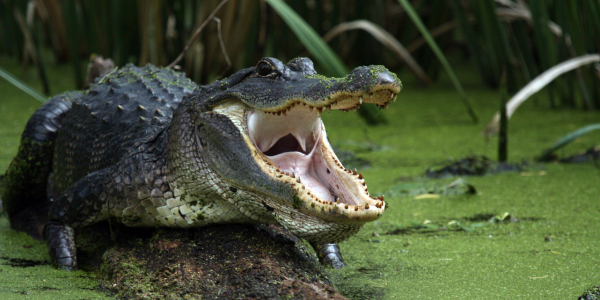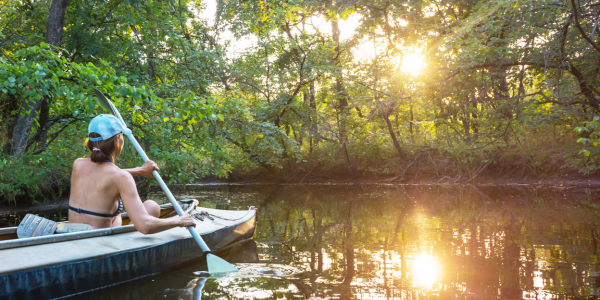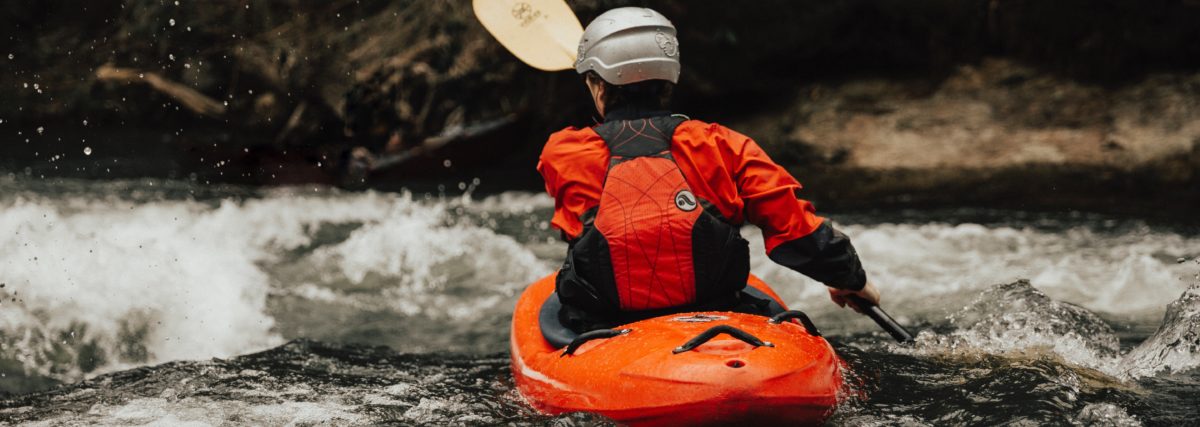Alligators are one of the most dangerous and feared creatures in the wild. Historically, there’s been many reported attacks on humans in various situations, but do alligators attack kayaks?
Yes, alligators can and do attack kayaks, but it’s a rare occurrence. Although it’s important for paddlers to be aware of their surroundings for an alligator sighting, they should also understand why these reptiles may attack in the first place.
Following safety protocols will help you stay safe while kayaking through their natural habitat. I’ve kayaked in Florida in some scary spots (grew up there!) so I’ve got a few essential safety tips here for you. Let’s get into it!
Where Do Alligators Spend Most Of Their Time?

These large, dangerous reptiles are usually found in freshwater wetlands like marshes, swamps, rivers, lakes, and ponds. They tend to use shallow water areas with densely vegetated aquatic plants to hide out when they’re in the water. They also stay close to the shoreline so they can get out and soak up the sun while being able to jump back in quickly if there’s a hunting opportunity.
While alligators are mostly found in Florida, they are also found as far north as North Carolina and there are even some in Alaska! Imagine that: they’re even in ALASKA!
However, you won’t find them in bodies of salt water because they can’t tolerate the salt but crocodiles can.
Safety Tips For How To Avoid An Alligator Attack While Kayaking

If you kayak in gator waters, you will want to pay attention to the following safety tips:
1. Try to avoid kayaking where alligators are known to live. This means being extra careful when you’re in swamps, marshes, slow moving rivers, lakes and ponds. Look for signs that warn of alligators, if possible.
2. Stay alert at all times while you’re paddling so you can spot any movements in the water or see an alligator in plain sight. If you do see one, keep an eye on it to see if it’s following you too closely or looks threatening. If it does become aggressive, try to hit it with your paddle or get to a safe area more quickly.
3. Remain as far away as possible from an alligator because they can lunge at you pretty fast, measuring about 30 mph. So you can imagine how fast things can go very wrong.

4. Don’t throw food at or provoke an alligator, nor should you try to touch one. As mentioned before, they can move pretty fast and you might get hurt, or even worse. Most of the time, alligators will keep their distance from us instead of threatening us
5. Don’t dangle your legs or arms off of the side of the kayak. If your boat is attacked, your arms and legs will be more vulnerable to injury or worse.
6. Always try to take someone with you for safety reasons. They could help to fend off the alligator while you’re paddling to lessen the chance of an attack. If something major did happen, they could go for help if you can’t move too well.
7. Take extra precautions if you see an alligator’s babies somewhere. Their mother is most likely very close by and she’ll be even more aggressive to protect them.
Final Thoughts
Although it’s not a common occurrence, an alligator could possibly attack your kayak. It is a frightening reality that paddlers must face when navigating waterways in the southeastern United States.
These reptiles are apex predators and have the capability to attack small boats, although they will rarely attack humans. However, remember to stay aware of your surroundings and take the necessary safety precautions when you’re out for a day of fun on the water.
Better to be safe than sorry! You may want to read about how to avoid shark attacks in a kayak as well.
